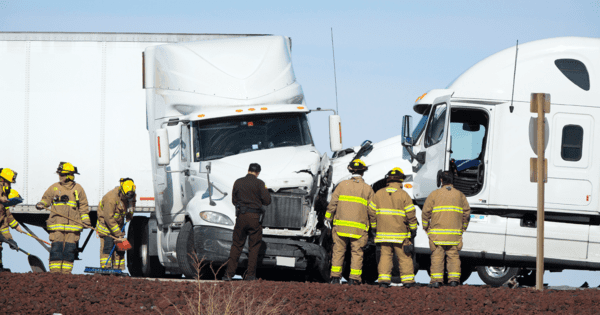Why a camera system is the right choice
Commercial Fleet reports on emerging trends associated with vehicle-mounted cameras, detailing how they help reduce accidents for 59% of fleets, with 55% of respondents agreeing they help improve driver behavior, and 44% noting a positive impact on insurance claims. Furthermore, Frost & Sullivan note how video telematics (camera systems combined with telematics data) can reduce the related costs associated with accidents by 75%.
However, like all things, not everything is made equal, so shop around and find the camera system supplier that matches your requirements.
When considering introducing a camera system
The vehicle camera system and fleet management software market is fragmented. There are a lot of simple dashcam and camera resellers on the market that don’t offer fleet management functionality such as:
- Advanced telematics dashboards
- Driver monitoring and remote coaching
- Cloud retrieval of harsh driver event footage
- Real-time accident reporting
- Vehicle maintenance and MOT scheduling
- AI powered collision warning systems
- Reliable customer service and support
Fleet managers should consider a provider that offers an all-in-one camera system that has fully integrated fleet management capabilities to achieve the maximum return on their investment.
8 things to look out for in choosing a fleet vehicle camera system
- Camera quality: Crystal clarity of what has been captured is paramount. Your independent witness can’t be creating ambiguity; hence HD picture quality is a must.
- Ultra-high definition (UHD) in-cab monitor: The HD imagery captured by the camera system displayed through an in-cab monitor empowers a driver by eliminating blind-spots.
- Surround vehicle view: Many providers of vehicle camera systems only offer dashcams or a limited range of cameras which can result in limited visibility around the vehicle. Consider the different types of road accidents such as “side swipes” or “rear ends” that can occur to your fleet vehicles and make sure your camera system provider can give you the visibility required.
- Driver Monitoring System (DMS): Driver distraction has been identified as the number 1 cause of road accidents. A camera system with DMS features will proactively detect driver fatigue and risky behaviors such as smoking or phone usage. Audible AI-triggered in-cab alerts make the driver self-aware of risks, giving them time to adjust their behavior or take a rest break, with video footage useable for driver coaching.
- Pedestrian and cyclist blind spot detection: The advance of artificial intelligence and machine learning means that a comprehensive fleet camera system should offer AI-powered collision warning driver alerts to maximize the safety for the driver and other road users.
- Data storage: It is preferable to opt for an encrypted secure digital cloud for storage over traditional SD card storage. It is also good practice to ensure 24/7 cloud access to data in case of emergencies.
- Strong account support team: Look for a team who offer experienced staff to carry out the hardware installation. A knowledgeable support team, easily reached and quick to resolve any issues.
- Fleet manager and driver mobile apps: In addition to an online dashboard accessible on a desktop, individual apps for both the manager and driver should be available. Fleet managers will be looking for insights to monitor drivers, and to retrieve footage. While drivers will be receiving coaching, carrying out safety checks and receiving updates from their fleet manager.







